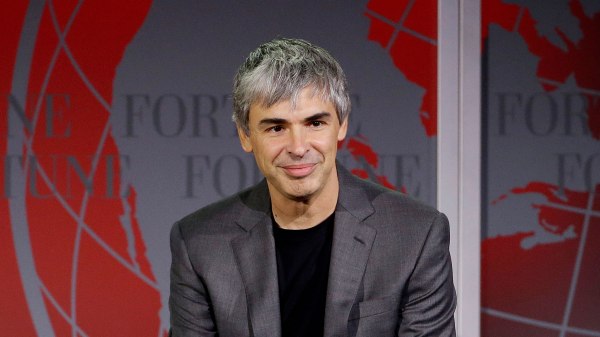As with every key issue in the Internet age, there are two diametrically opposed views that are starting to form; two warring tribes that draw different conclusions and relentlessly mock and ridicule each other. Global warming believers vs. deniers, pro- vs. anti-Trumpers, Bitcoiners vs. anti-Bitcoiners, Tesla vs. TeslaQ, etc. — they all essentially represent dichotomies. In this case, we are looking at doomsday preppers vs. the it’s-just-a-flu-bro group. It’s true that the common flu does kill a lot of people; most of which are elderly or frail. It’s also true that, it’s a very similar picture with the coronavirus, only the coronavirus still (luckily) is only around on a smaller scale. We don’t know exactly how it will pan out yet, but I’m still more concerned with the panic and disorder than the actual virus. Panic kills. Overwhelm of basic services and a scarcity of necessary goods & services, kills. And this all starts when a certain narrative starts to spread — so let’s look into the media aspects of the virus reporting and the social media hullabaloo that’s continuing to build.
There’s a phrase that goes bad news travels fast, meaning news about misfortune and trouble circulates quickly; probably more quickly than good news. Also, bad news is difficult to retract. Finally, bad news is lucrative. There’s a reason for some of the fake news you see out there. Nothing attracts traffic as effectively as a real killer of a story. There was a story circulating that the Pope had contracted the virus, and it was starting to gain traction. That turned out to be false. Nevertheless, if you’re the first to this story, you’ll be garnering a lot of clicks — and sweet, sweet ad revenue. (Forget about whether or not it is actually true). That’s part of the reason why the news media revolves so much around the very latest speculation and pontification; it’s bordering on rumormongering and actual falsehood, as it brings in viewers, listeners and readers. Bad news sells. But the revenue is only one component — and when it comes to the news media business, there’s always an underlying agenda to boot, i.e. the bad news are used as means to an end.
In this case, the agenda seems to be to keep the population calm, and to lull people into a sense of security and normalcy. The established media are being so obedient in towing the official line (of everything being under control), that it’s becoming obvious that the information we’re given is false or deliberately misleading. For instance, that masks do more harm than good, that US cases will soon drop to 0, that this is less of a threat than a flu, that there’s no risk at all to continue to gather in large groups, etc; there’s no need to stock up on groceries or medications, etc. It’s to the point now where the CDC’s actual advice does not match the official story anymore. So in this instance, the agenda is to squelch the worry; to calm the masses — so much so that the official advice is not sound at all.
If we should have learned anything from earlier pandemics, it’s that keeping a lid on the truth is about the worst thing you can do. Had you admitted early on, before there was any palpable indications of cases landing in the US, that this is indeed a serious potential threat, you would have had a slight response from the public, but not outright panic. Insisting that things are so much under control, that we shouldn’t have food, masks, water, medications or supplies — while cases are mounting, is a horrible strategy, and one that backfires. Because sooner or later, you see the discrepancy between reality and the official PR, confidence falters, there is no trustworthy narrative, not only is the worst case are assumed, but in the lack of any real information, misinformation spreads. That’s when the real panic really takes hold. It’s better to admit there is the chance of a problem early, act while there’s time, than to lull people into a false sense of security only for the truth to inevitably emerge. Forcing the beach ball under water is only going to make it pop up even harder and faster.
let’s not forget that in this day and age, bad news is very easy to find, and not just is it broadcast to you, but you can seek it out, in-depth and in realtime. You can search for coronavirus deaths and you’ll find a never-ending stream of alarming news. News are even curated for you with your location in mind, and based on your previous interactions. Again, the walls of your filter bubble are creeping in on you. You should take the coronavirus threat seriously, and advocated for taking precautions a month ago. That said, you have to be wary of your selective attention and the bias that comes with it. It’s possible to find information on cases near you, and people obsess over the interactive case maps: giant ominous red circles of death encapsulating country after country. You can work yourself into a state of panic looking at this.
We’ve had many, many serious threats over the past few years, and the response to some of these threats have been completely out of proportion. The Ozone hole, acid rain, AIDS, Ebola, SARS, global warming, climate change: these have all been presented to us as imminent, immediate life threatening crises — but they haven’t proven to be such. At least not in the way they’ve been presented to us. Most of the people who raise the alarm on these issues, have their heart in the right place no doubt. But let’s not forget that there’s a lot of money in all the attention you can garner from fear as well. Fear is also a strong motivator, and something you can capitalize on as a marketer, politician, businessman, or advocate of whatever the cause might be.
Take precautions, use common sense, tell your friends to get some basic supplies, but don’t help whip people into a blind panic. You’ve done what you could, now hunker down and calm down, monitor the situation and err on the side of caution. Whether the mortality rate is 1%, 3% or 10%, there will be real consequences to the virus, and in many ways the damage is already done — the financial damage in-particular. These effects have not yet fully materialized. Yes, the stocks are down some 10% since the outbreak, but with China at a near stand-still, and demand & consumer activities dropping in the U.S., this may only be just the beginning. Remember, we won’t see Q1 financial results for another couple of of months. Speaking of China, we haven’t even seen the full effects from the disruption in the supply chains. There’s still some water in the hose, and it’s enough to keep the trickle going, but not for too long. Just in time inventory management very quickly becomes no-more-stock inventory management.
Are you all stocked up on toilet paper and tuna cans? Are you wearing an N95 as we speak? Do you trust the media? Take a listen and comment below!
Supporters of taim.io.









